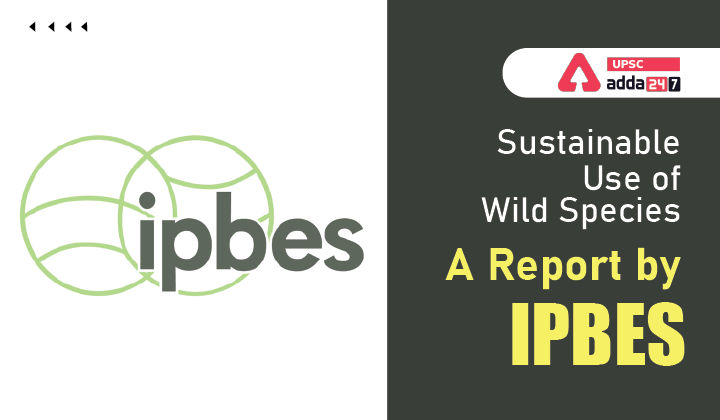Table of Contents
Sustainable Use of Wild Species: Relevance
- GS 3: Conservation, environmental pollution and degradation, environmental impact assessment.
Sustainable Use of Wild Species: Context
- Recently, the Intergovernmental Science-Policy Platform on Biodiversity and Ecosystem Services (IPBES) has released a new report stating that about 50,000 wild species globally can meet the needs of billions of people.
Sustainable Use of Wild Species: Key points
- The first of the kind report is the has been conceived after a period of four years.
- The 2019 Global Assessment of the IPBES has identified over-exploitation of wild species as one of the main drivers of current biodiversity loss.
- The report has shortlisted five categories of practices used for wild species — fishing, gathering, logging, terrestrial animal harvesting which includes hunting and non-extractive practices such as observing.
- The report examined specific uses for each category regarding food, materials, medical benefits, energy, recreational and ceremonial purposes and decorations over the past two decades.
Sustainable Use of Wild Species: Key findings
- About 50,000 wild species are used through different practices, including more than 10,000 wild species harvested directly for human food.
- Rural people in developing countries are most at risk from unsustainable use, with lack of complementary alternatives often forcing them to further exploit wild species already at risk.
- One out of five source their food from wild plants, algae and fungi, while 2.4 billion depend on firewood for cooking and around 90 per cent of the 120 million population pursuing fisheries rely on small-scale fishing.
- According to the report, the use of wild species defines identities and livelihoods and also holds cultural significance.
- Helping indigenous and local communities maintain their ability to use wild species sustainably and protecting their cultural practices associated with them would ensure their survival.
- The report also noted that indigenous people and local communities used local knowledge, practices and spirituality for the sustainable use of wild species.
- They respected nature and only took what they needed. This ensured that healthy populations of wild species were maintained.
Read current affairs for UPSC




 TSPSC Group 1 Question Paper 2024, Downl...
TSPSC Group 1 Question Paper 2024, Downl...
 TSPSC Group 1 Answer key 2024 Out, Downl...
TSPSC Group 1 Answer key 2024 Out, Downl...
 UPSC Prelims 2024 Question Paper, Downlo...
UPSC Prelims 2024 Question Paper, Downlo...





